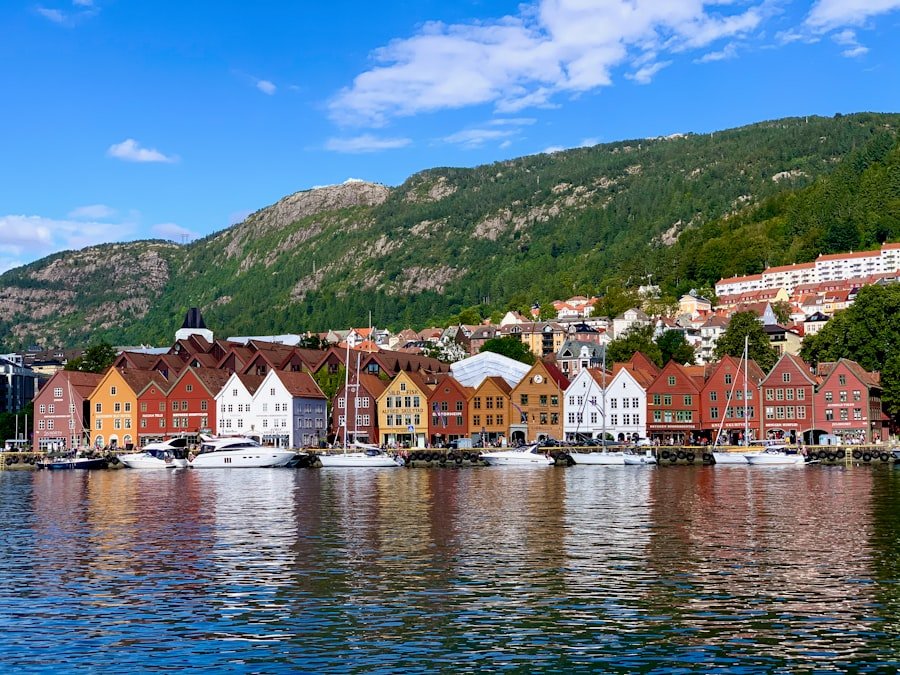Housing insurance is a crucial aspect of property ownership in Norway, serving as a safety net for homeowners and renters alike. The unpredictable nature of life, coupled with the potential for natural disasters, theft, and other unforeseen events, makes having adequate insurance coverage essential. In a country known for its stunning landscapes and harsh weather conditions, the importance of safeguarding one’s home cannot be overstated.
Housing insurance not only provides financial protection but also offers peace of mind, allowing individuals to focus on enjoying their homes rather than worrying about potential risks. Moreover, housing insurance is often a requirement when securing a mortgage. Lenders typically mandate that borrowers have insurance in place to protect their investment.
This requirement underscores the significance of housing insurance in the Norwegian property market. By ensuring that properties are adequately insured, homeowners can protect their financial interests and maintain the value of their investments. In essence, housing insurance is not merely an optional extra; it is a fundamental component of responsible property ownership in Norway. Feeling overwhelmed by your move to Norway? Get personalized expert advice by booking a one-on-one session with our relocation specialists.
Summary
- Understanding the Importance of Housing Insurance in Norway
- Types of Housing Insurance Available in Norway
- Factors to Consider When Choosing Housing Insurance
- The Process of Insuring Your Property in Norway
- Common Coverage and Exclusions in Housing Insurance Policies
Types of Housing Insurance Available in Norway
In Norway, there are several types of housing insurance policies available to cater to the diverse needs of property owners. The most common type is the home insurance policy, which typically covers both the building and its contents. This comprehensive coverage protects against a range of risks, including fire, water damage, theft, and vandalism.
Home insurance policies can be tailored to suit individual requirements, allowing homeowners to select additional coverage options based on their specific circumstances. Another important type of housing insurance is tenant insurance, which is designed for renters. This policy covers personal belongings within a rented property and provides liability protection in case of accidental damage to the landlord’s property.
Additionally, there are specialised policies for holiday homes and second properties, which may have different coverage needs compared to primary residences. Understanding the various types of housing insurance available is essential for homeowners and renters alike, as it enables them to make informed decisions about their coverage.
Factors to Consider When Choosing Housing Insurance

When selecting housing insurance in Norway, several factors should be taken into account to ensure that the chosen policy meets individual needs. One of the primary considerations is the level of coverage required. Homeowners should assess the value of their property and belongings to determine how much coverage they need.
It is also important to consider any additional risks specific to the location of the property, such as susceptibility to flooding or landslides, which may necessitate extra coverage. Another critical factor is the policy’s terms and conditions. Homeowners should carefully review the exclusions and limitations outlined in the policy to understand what is not covered.
Additionally, comparing premiums from different insurers can help identify the best value for money while ensuring adequate coverage. It is advisable to seek advice from insurance professionals who can provide insights into the nuances of various policies and help navigate the complexities of housing insurance in Norway.
The Process of Insuring Your Property in Norway
Insuring a property in Norway involves several steps that homeowners must follow to secure appropriate coverage. The first step is to gather relevant information about the property, including its size, age, location, and any unique features that may affect its insurability. This information will be required when obtaining quotes from different insurance providers.
Once homeowners have gathered the necessary details, they can begin comparing policies from various insurers. It is advisable to obtain multiple quotes to ensure a comprehensive understanding of the market rates and coverage options available. After selecting a suitable policy, homeowners will need to complete an application form and provide any additional documentation requested by the insurer.
Once approved, the policy will be issued, and homeowners can rest assured that their property is protected against potential risks.
Common Coverage and Exclusions in Housing Insurance Policies
Housing insurance policies in Norway typically offer a range of coverage options designed to protect homeowners from various risks. Common coverage includes protection against fire damage, water damage from burst pipes or flooding, theft of personal belongings, and liability coverage for accidents that occur on the property. Many policies also offer additional benefits such as coverage for temporary accommodation if the home becomes uninhabitable due to an insured event.
However, it is equally important to be aware of common exclusions in housing insurance policies. For instance, many policies do not cover damage caused by natural disasters such as earthquakes or landslides unless specifically included as an add-on. Additionally, wear and tear or maintenance issues are generally not covered under standard policies.
Homeowners should carefully read their policy documents to understand these exclusions and consider whether additional coverage may be necessary for their specific circumstances.
Understanding the Cost of Housing Insurance in Norway

The cost of housing insurance in Norway can vary significantly based on several factors, including the property’s location, size, age, and overall condition. Generally speaking, properties located in urban areas may attract higher premiums due to increased risks associated with theft or vandalism. Conversely, rural properties may benefit from lower premiums but could face unique risks such as flooding or landslides depending on their geographical location.
Additionally, individual factors such as claims history and credit score can influence insurance premiums. Homeowners with a history of making frequent claims may find themselves facing higher costs compared to those with a clean record. It is essential for homeowners to shop around and compare quotes from different insurers to find a policy that offers both adequate coverage and competitive pricing.
Tips for Finding the Best Housing Insurance Policy for Your Property
Finding the best housing insurance policy requires careful consideration and research. One effective strategy is to utilise online comparison tools that allow homeowners to evaluate multiple policies side by side. These tools can provide insights into coverage options, premiums, and customer reviews, making it easier to identify a suitable policy.
Another tip is to consult with an insurance broker who can offer expert advice tailored to individual needs. Brokers have access to a wide range of insurers and can help navigate complex policy details while ensuring that homeowners receive appropriate coverage at competitive rates. Additionally, it is wise to read customer reviews and testimonials about different insurers to gauge their reputation for customer service and claims handling.
The Claims Process for Housing Insurance in Norway
In the unfortunate event that a claim needs to be made on a housing insurance policy in Norway, understanding the claims process is vital for homeowners. The first step is to notify the insurer as soon as possible after an incident occurs. Most insurers have specific timeframes within which claims must be reported, so prompt action is essential.
Once a claim has been reported, the insurer will typically assign a claims adjuster who will assess the situation and determine the validity of the claim. Homeowners may be required to provide documentation such as photographs of damages or receipts for lost items. It is crucial for homeowners to keep detailed records throughout this process to facilitate a smooth claims experience.
After the assessment is complete, the insurer will communicate their decision regarding compensation based on the terms outlined in the policy.
How to Review and Update Your Housing Insurance Policy
Regularly reviewing and updating housing insurance policies is essential for ensuring that coverage remains adequate over time. Homeowners should consider reviewing their policy annually or whenever significant changes occur in their lives or properties—such as renovations or changes in personal belongings—that may affect coverage needs. When reviewing a policy, it is important to assess whether current coverage limits are sufficient based on any changes in property value or personal assets.
Homeowners should also check for any new exclusions or changes in terms that may have been introduced since the last review. If necessary, adjustments can be made by contacting the insurer or broker to discuss options for updating coverage.
Additional Considerations for Second Homes and Holiday Properties
Owning a second home or holiday property in Norway presents unique considerations when it comes to housing insurance. These properties may not be occupied year-round, which can affect risk assessments by insurers. Homeowners should ensure that their policies adequately cover potential risks associated with unoccupied properties, such as vandalism or damage from weather-related events.
Additionally, holiday properties may require specialised insurance that accounts for rental income if they are rented out when not in use by the owner. It is essential for homeowners with second properties to communicate their specific needs with insurers to ensure comprehensive coverage tailored to their unique circumstances.
The Role of Housing Insurance in Protecting Your Investment in Norway
Ultimately, housing insurance plays a pivotal role in protecting investments in Norwegian real estate. By providing financial security against unforeseen events such as natural disasters or theft, housing insurance allows homeowners to safeguard their assets while enjoying peace of mind. In a country where property values can fluctuate due to various factors—including economic conditions and environmental risks—having robust insurance coverage becomes even more critical.
Moreover, housing insurance contributes to overall stability within the property market by ensuring that homeowners can recover from losses without facing significant financial hardship. This stability benefits not only individual homeowners but also communities at large by fostering confidence in property ownership as a viable long-term investment strategy. In conclusion, understanding housing insurance in Norway is essential for anyone looking to protect their property investment effectively.
With various types of policies available and numerous factors influencing coverage options and costs, it is crucial for homeowners to conduct thorough research and seek professional advice when necessary. By doing so, they can ensure that they have adequate protection against potential risks while enjoying all that life in Norway has to offer. For those interested in learning Norwegian while navigating these complexities of housing insurance and property ownership in Norway, consider enrolling in courses at NLS Norwegian Language School in Oslo.
Their comprehensive language programmes are designed not only to teach you the language but also immerse you in Norwegian culture—an invaluable asset when dealing with local regulations and practices related to housing insurance and beyond.
Register for a Norwegian class at the NLS Norwegian Language School now!

